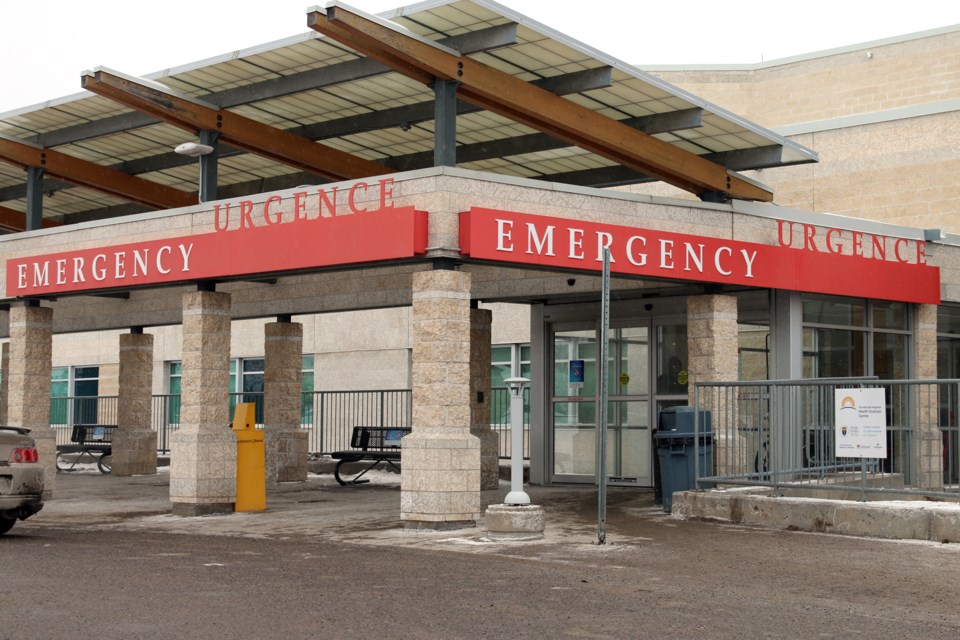THUNDER BAY — Wait times in the emergency department at the Thunder Bay Regional Health Sciences Centre are still higher than normal, but its CEO says admissions likely peaked last month as the region saw an earlier arrival of flu season compared to the rest of the province.
“Our hospital, like many others across the province, continues to see higher acuity in our emergency department that has really led to more admissions,” hospital CEO Rhonda Crocker Ellacott said on Thursday.
“The good news is, however, it looks like our volumes are beginning to stabilize. When we look at the data, it looks like we likely peaked in October and we are starting to return to a more seasonable normal for our emergency and across our hospital.”
The early arrival of flu season this year has seen hospitals across the province struggling in recent months with higher than normal admissions relating to RSV, flu, and COVID-19, resulting in long wait times in emergency departments and high capacity.
As of Thursday, the medical and surgery capacity at the Thunder Bay Regional Health Sciences Centre was at 106 per cent, with ICU occupancy at 100 per cent. There are currently 30 patients admitted to the hospital who are COVID-19 positive, three of whom are in the ICU.
Shortages of cold and flu medications, particularly for children, has also resulted in more people turning to emergency departments for care.
“Certainly some individuals presenting to the emergency department are presenting as a result of medication shortages,” Crocker Ellacott said. “In the hospital we have the ability to compound, so we are able to keep up with the shortage we are seeing on the pharmacy shelf, but it does play a factor.”
The flu season appears to have arrived in the Thunder Bay district earlier than the rest of the province, with a high number of cases reported throughout September and October.
The number of admissions likely peaked in mid-October, but Crocker Ellacott said that does not mean the hospital is not seeing higher than normal activity in its emergency department.
“What it felt like was at least a 20 per cent increase in wait times for those presenting to the emergency department, either waiting for a bed or waiting for assessment,” she said.
“The good news is over the last seven days we are seeing a return to about 226 average visits in emergency on a daily basis. That is much different than the 300 patients that we were seeing a couple weeks ago in the emergency department on a daily basis. It reduces the pressure.”
The situation is a little different on the pediatric side of the Thunder Bay Regional Health Sciences Centre. The province asked the hospital to increase its pediatric capacity by 150 per cent, taking it from 12 beds to 18 in mid-November.
“We’ve seen significant variation in terms of our pediatric capacity and need,” Crocker Ellacott said. “At times we are at 150 per cent, close to 18 beds full. But now we are down to below our 12 beds. That really shifts on an hour-to-hour basis or day-to-day basis.”
The rise in influenza cases across the city did not spare hospital staff, and Crocker Ellacott said the hospital continues to struggle with staffing shortages due to illness.
“There’s always shortages unfortunately,” she said. “We are strapped when it comes to health human resources. We track the number of individuals off with COVID-19 like illness. Those numbers have dropped significantly. We are at 26 I believe today. But seasonal flu is something that does have a significant impact on staff as well.”
The surge in patient volumes in the last three months has also impacted surgical procedures, with the hospital retracting surgical volumes to accommodate the needs of people with respiratory illnesses.
According to Crocker Ellacott, the hospital has done a good job addressing long-awaited surgeries leading up to the recent surge and she expects the hospital will return to normal surgical activity next Monday.
The Thunder Bay Regional Health Sciences Centre’s COVID-19 response level also remains in Red, or Control. It was moved up from Orange, or Restrict earlier this week due to more patients presenting with respiratory illnesses that could put staff and other patients at risk.
“That is the purpose in moving to a different level is to protect and preserve our health care environment,” Crocker Ellacott said, adding that she hopes the response level will be reduced soon.
The Red or Control level includes staff utilizing more personal protective equipment and some restrictions on visitation within the hospital.
